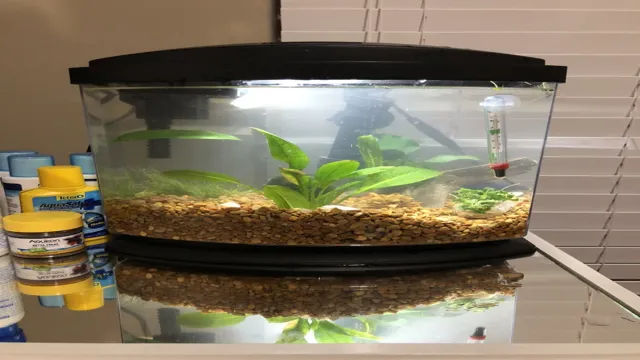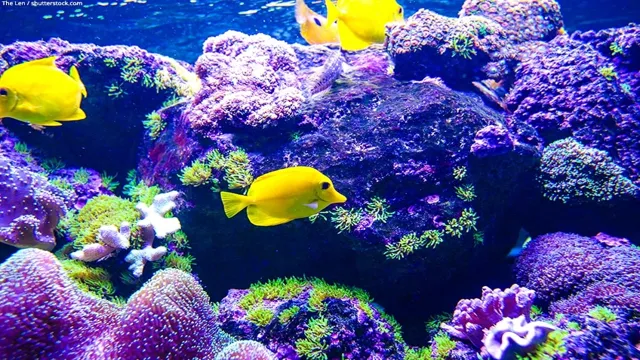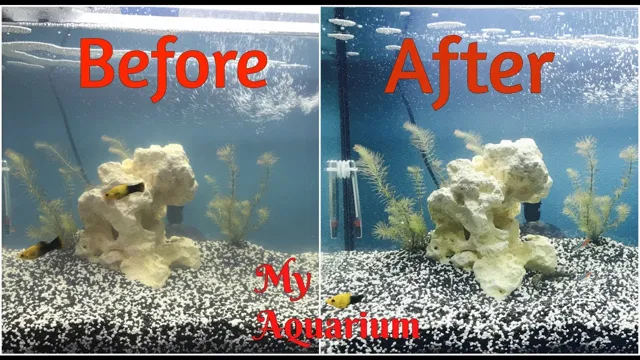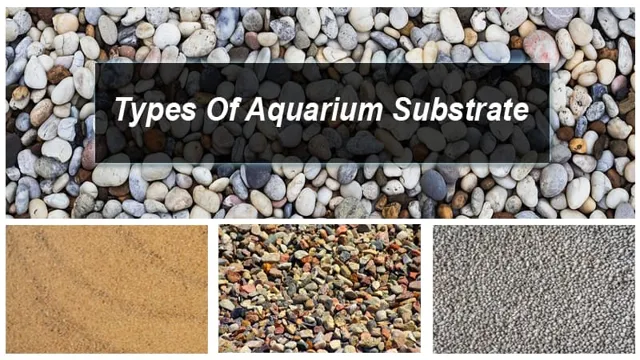If you’re a passionate aquarium enthusiast, you know how crucial it is to maintain a stable and healthy environment for your aquatic pets. But despite your best efforts, sometimes things can go awry, leading to what’s known as an ammonia spike in your aquarium. This happens when the ammonia level in your tank skyrockets, sending your fish and other aquatic life into a state of distress.
The consequences of this can be severe, potentially even fatal for your beloved pets. So, in this blog post, we’ll explore what causes an ammonia spike, how to prevent it and, most importantly, what to do if it does happen. Let’s dive in.
What is an Ammonia Spike?
An ammonia spike can occur in an aquarium when there is a sudden increase in the levels of ammonia in the water. This can be caused by a number of factors, such as overfeeding, overstocking, or a filter malfunction. In order to intentionally cause an ammonia spike in your aquarium, you can add ammonia to the water using products like pure ammonium hydroxide or ammonium chloride.
It’s important to note that intentionally causing an ammonia spike should only be done in a controlled environment, and with the proper knowledge and equipment to manage the levels of ammonia in the water. This process can be used for cycling a new aquarium, as it helps to establish the necessary bacteria colonies that are required to maintain a healthy aquarium environment. However, it’s important to be aware of the risks associated with ammonia spikes, as high levels of ammonia can be harmful to fish and other aquatic life.
It’s always best to consult with a professional or do thorough research before attempting to intentionally cause an ammonia spike in your aquarium.
Definition and Causes
An “Ammonia Spike” refers to a condition where the amount of ammonia in the water in fish tanks becomes abnormally high, which can be life-threatening to your pet fish. Ammonia is a toxic waste matter produced by fish, uneaten fish food, and decaying plants. Normally, aquarium filters break down ammonia into nitrites and nitrates, which are less harmful.
But, if your tank is overcrowded, or if the filtration system is not functioning properly, the buildup of ammonia can cause an “Ammonia Spike”. This condition can be indicated by your fish being lethargic, gasping for air, and the appearance of white discoloration on their skin or fins. Other causes of ammonia spike in fish tanks include dirty substrate, overfeeding your fish, an unestablished nitrogen cycle, and inadequate aeration.
As soon as you notice any of these signs, it is crucial to test your water and, if necessary, perform a water change to reduce the ammonia level and prevent further damage.

Why Would You Want to Cause an Ammonia Spike?
If you’re a fish enthusiast, then you’ve probably heard of an ammonia spike before. It’s a sudden increase in ammonia levels in an aquarium, and while it might sound dangerous to your fish, causing an ammonia spike can actually be beneficial. Ammonia is a natural byproduct of fish waste, and it can help promote the growth of beneficial bacteria in your tank.
These bacteria can help break down harmful compounds, like nitrites and nitrates, making your aquarium a healthier environment for your fish to thrive in. To cause an ammonia spike, you’ll need to add more fish or increase the frequency of feedings. However, it’s important to note that too much ammonia can be harmful to your fish, so make sure to monitor levels and take the appropriate actions if necessary.
By intentionally causing an ammonia spike and carefully managing it, you can maintain a healthy and thriving aquatic ecosystem in your home.
Introducing New Fish or Plants
If you’re an aquarium enthusiast, introducing new fish or plants is an exciting prospect. However, it’s important to consider the potential consequences, such as an ammonia spike. Ammonia is created through the breakdown of fish waste and leftover food. (See Also: How to Make an Aquarium Refugium: A Step-by-Step Guide)
When introducing new fish or plants, there may not be enough beneficial bacteria in the tank to efficiently process the increased waste and excess nutrients. This can result in an ammonia spike, which can be harmful or even deadly to your aquatic creatures. So, why would you intentionally want to cause an ammonia spike? Well, some aquarists may deliberately cause an ammonia spike when cycling their tank to establish a healthy level of beneficial bacteria.
However, this process should be carefully monitored to prevent harm to your fish. It’s important to prepare your tank and test the water parameters regularly before introducing any new additions to your aquatic ecosystem. By being mindful and attentive, you can enjoy introducing new fish or plants to your aquarium without causing an ammonia spike.
Testing Filtration and Water Quality Control
When it comes to testing filtration and water quality control, intentionally causing an ammonia spike may seem counterintuitive, but it can actually be a helpful tool in determining the effectiveness of your filtration system. Ammonia is a byproduct of fish waste and can be harmful to aquatic life in high concentrations. By introducing a small amount of ammonia into your tank and monitoring the levels with a test kit, you can observe how quickly and efficiently your filtration system removes the ammonia.
This can help you identify any areas where your filtration may be lacking and make necessary adjustments to ensure the health and safety of your aquatic pets. Additionally, regularly testing and monitoring your water quality can prevent potential spikes and keep your tank’s ecosystem balanced. So, don’t be afraid to cause an ammonia spike—sometimes a little disruption is necessary for optimal results.
How to Cause an Ammonia Spike in Your Aquarium
If you’re looking to cause an ammonia spike in your aquarium, there are a few things you should know. First and foremost, an ammonia spike can be dangerous for your fish and other inhabitants, so it’s important to proceed with caution. One way to cause an ammonia spike is to overfeed your fish.
Any uneaten food will begin to decompose and release ammonia into the water. Another method is to overcrowd your tank with too many fish. This will result in more waste being produced, which in turn produces more ammonia.
You can also disrupt the biological filtration system by cleaning the filter too often or introducing new fish too quickly without properly acclimating them first. Whatever method you choose, be aware that an ammonia spike can harm your aquarium inhabitants and should be avoided unless absolutely necessary. Remember, the health and well-being of your aquatic pets should always be your top priority.
Method 1: Overfeeding
If you want to cause an ammonia spike in your aquarium, one of the easiest methods is overfeeding. While it may seem like you’re doing a good thing by giving your fish more food, excess uneaten food can decompose and produce ammonia. This can lead to toxic levels of ammonia in the tank, endangering the health of your fish and other aquatic life.
To prevent this, make sure you are feeding your fish the appropriate amount based on their species and size. It’s also important to remove any uneaten food with a net or siphon so it doesn’t break down and release harmful chemicals into the water. Using a high-quality filter and regular water changes can also help prevent an ammonia spike in your aquarium.
By being mindful of your feeding habits and tank maintenance, you can keep your fish happy and healthy while avoiding potential ammonia spikes.
Method 2: Adding Too Many Fish at Once
Adding too many fish at once is one of the quickest ways to cause an ammonia spike in your aquarium. While it may be tempting to fill up your tank with all the fish you’ve been eyeing, introducing too many fish at once can be detrimental to your tank’s health. When fish are added to a tank, they produce waste, primarily in the form of ammonia. (See Also: How to Breed Clownfish in Aquarium: Tips for Successful Breeding at Home)
In small amounts, the beneficial bacteria in your tank can break down this ammonia, but if there is too much, the bacteria will not be able to handle it. When ammonia levels rise, it can become toxic to your fish, causing stress, illness, and even death. To avoid this, it’s best to add fish slowly and gradually so that the bacteria in your tank can adjust and keep the ammonia levels under control.
Remember, patience is key when it comes to building a healthy and thriving aquarium ecosystem.
Method 3: Adding Organic Waste
If you are looking to cause an ammonia spike in your aquarium, adding organic waste is a simple and effective method. Organic waste can come in various forms such as leftover food, dead plants or animals, or fish waste. When these organic materials break down, they release ammonia into the water.
As the concentration of ammonia builds up, it can create an ammonia spike that can harm your fish. To prevent any harm, it is crucial to monitor the ammonia levels in your tank regularly. Besides causing an ammonia spike, adding organic waste also provides a natural source of food for the beneficial bacteria that convert ammonia to nitrite and nitrate.
This creates a healthy environment for your fish to thrive in. By regularly adding organic waste to your aquarium, you can simulate the natural processes that occur in nature, creating a balanced and healthy ecosystem for your fish to live in. However, remember to avoid overfeeding or adding too much organic material as it can quickly lead to an ammonia spike that can harm your fish.
How to Monitor and Manage an Ammonia Spike
If you’re looking to intentionally cause an ammonia spike in your aquarium, be prepared to deal with the consequences. An ammonia spike can quickly become detrimental to the health of your fish, causing stress, illness, and even death. However, if you still wish to proceed, there are a few ways to safely induce an ammonia spike.
One method is to overfeed your fish and allow the uneaten food to decompose, which will release ammonia into the water. Another method is to introduce an excessive amount of fish or other living organisms into the tank, which will create a greater demand for oxygen and produce more waste. Once you have caused the ammonia spike, it’s crucial to monitor the levels closely and take immediate action if necessary.
This can include performing frequent water changes, using an ammonia-removing product, or adding more beneficial bacteria to the tank to help break down the ammonia. With proper management, you can keep your fish healthy and prevent an ammonia spike from causing long-term damage to your aquarium.
Testing Water Parameters
Testing Water Parameters Ammonia is a toxic chemical that builds up in an aquarium when there is an imbalance in the nitrogen cycle. Monitoring ammonia levels is crucial for maintaining a healthy aquatic environment. A sudden increase in ammonia, also known as an ammonia spike, can be detrimental to your fish and other aquatic life.
It is recommended to test water parameters regularly to prevent an ammonia spike from happening. You can use test kits specifically designed for aquariums to measure ammonia levels. If you discover an ammonia spike, there are several steps you can take to manage the situation.
First, perform immediate water changes to dilute the ammonia levels. Second, ensure that your filter is working properly and consider adding additional filtration or upgrading your current filter. Lastly, avoid overfeeding your fish and ensure that your aquatic ecosystem is not overstocked. (See Also: How to Create an Amazing Aquarium Tunnel: A Step-by-Step Guide)
By testing and monitoring water parameters regularly, you can prevent an ammonia spike and maintain a healthy environment for your aquatic friends.
Reduction Techniques
Ammonia Spike Managing an ammonia spike in your aquarium can be a daunting task, but there are reduction techniques that can help you prevent and manage it. First, understanding the causes of an ammonia spike is important. It usually occurs due to overfeeding, overstocking, or inadequate filtration.
Therefore, to prevent an ammonia spike, avoid overfeeding and overcrowding your aquarium, and ensure proper filtration. Water changes are also crucial in removing ammonia from the water. Besides, live plants such as anacharis, java ferns, or hornworts can help reduce ammonia levels.
Additionally, you can use products such as bacterial supplements to help break down harmful toxins and prevent ammonia buildup. In case of an ammonia spike, reduce feeding and increase water changes. Using activated carbon and zeolite can also help remove excess ammonia from the water.
Monitoring ammonia levels in your aquarium is vital to prevent and manage an ammonia spike. Regular water testing can help you detect any spike and take appropriate measures. In summary, proper feeding, filtration, water changes, live plants, and bacterial supplements are reduction techniques that can help prevent and manage an ammonia spike in your aquarium.
Conclusion and Warnings
Well, after going through all the steps on how to cause an ammonia spike in your aquarium, let me tell you, you must be feeling pretty adventurous! While normally we want to aim for stable and healthy aquarium conditions, sometimes it can be fun to shake things up a little bit. Just be sure to keep a watchful eye on your fish and test your water levels regularly to ensure they can handle the change. And remember, this should only be attempted by experienced aquarium enthusiasts who know how to properly care for their fish.
So, go forth and cause an ammonia spike if you dare, but please do so responsibly!”
FAQs
1. What is an ammonia spike and why is it harmful to aquarium inhabitants? A: An ammonia spike occurs when there is too much ammonia in the aquarium water, which can be highly toxic to fish and other aquatic creatures. Ammonia is a waste product of fish and plant decay, so a spike can occur due to overfeeding, inadequate filtration or water changes, or the introduction of new fish without proper acclimation. 2. How can I intentionally cause an ammonia spike in my aquarium? A: Intentionally causing an ammonia spike is generally not recommended, as it can be harmful to your fish and other aquatic life. However, if you want to test the effectiveness of your filtration system or monitor the cycling process of a new aquarium, you can add a small amount of fish food or pure ammonia to the water. Be sure to monitor ammonia levels closely and perform frequent water changes to prevent harm to your aquatic life. 3. How long does it take for an ammonia spike to occur in an aquarium? A: The time it takes for an ammonia spike to occur can vary depending on several factors, including the size of the aquarium, the number and type of fish, and the effectiveness of the filtration system. Generally, it can take anywhere from a few hours to a few days for ammonia levels to rise significantly. 4. Can an ammonia spike kill my fish? A: Yes, an ammonia spike can be highly toxic to aquarium inhabitants and can potentially kill fish and other aquatic creatures. Symptoms of ammonia poisoning can include lethargy, gasping for air at the surface, discolored or frayed fins, and a white film on the eyes and gills. If you suspect an ammonia spike, it is important to perform a water change immediately and monitor ammonia levels closely. 5. How can I prevent an ammonia spike in my aquarium? A: The best way to prevent an ammonia spike is by performing regular water changes, avoiding overfeeding, and ensuring that your filtration system is efficiently removing ammonia and other waste products. Additionally, introducing new fish slowly and monitoring water parameters regularly can help prevent sudden spikes in ammonia levels. 6. Can plants help reduce ammonia levels in an aquarium? A: Yes, aquatic plants can help reduce ammonia levels in an aquarium by absorbing and utilizing ammonia as a nutrient for growth. Additionally, plants can provide hiding places and natural filtration, helping to maintain a healthy and stable aquatic environment. 7. What is the optimal range for ammonia levels in an aquarium? A: The optimal range for ammonia levels in an aquarium is typically 0 ppm (parts per million). However, during the cycling process of a new aquarium, it is normal to see a temporary spike in ammonia levels as beneficial bacteria establish themselves. As long as ammonia levels do not exceed 5 ppm and are gradually decreasing, this process is usually not harmful to your aquatic life.







